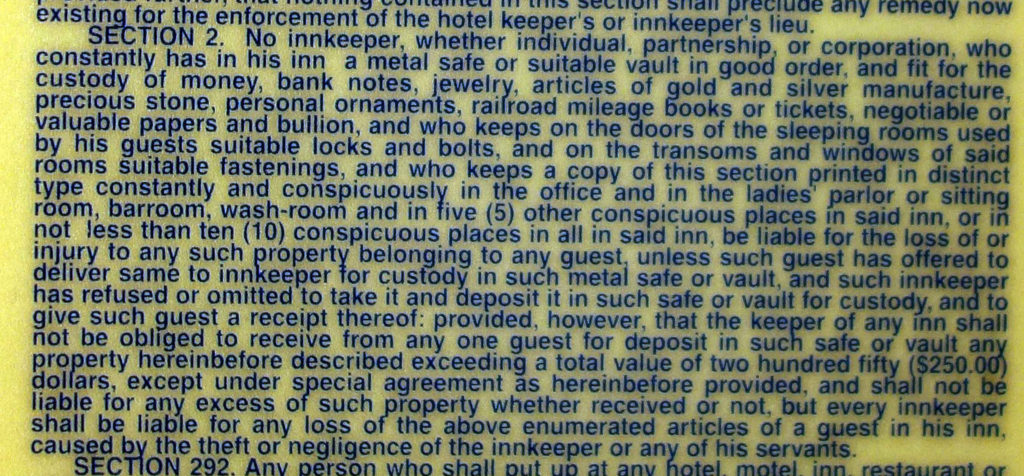Plain English: What it is, and how to do it

Plain English is an initiative in the technical writing community to write more plainly. It started in the UK in the 1940s, and in the US in the 1970s. In 2010, the Plain Writing Act was passed in the United States. Readers increasingly expect Plain English even if they don’t know exactly what it is.
Legalese on the motel door by Mike Steele is licensed under CC BY 2.0
Why
Plain English makes writing clearer and easier to understand. It is appropriate for all writing, but especially useful when communicating technical ideas or when communicating with an international audience.
How
There are whole books written about Plain English, but this article has just a few guidelines.
Use short sentences.
Don’t use two words if one will do.
You can have short sentences and long ones, but keep the average sentence length to 20 words or less. Longer sentences have more complicated sentence structure. If you are writing longer sentences, try breaking them up into several smaller ones.
Use short words.
Don’t use a big word if a small one will do.
Use meaningful headings, but not too many levels of headings.
Headings help the reader scan the material. Meaningful headings describe the content below it. So, it is better to not have more than three levels of headings. If there are more than three levels, try to break it up into smaller parts.
Use lists and tables.
This also helps the reader scan and find information.
Use second person (singular or plural) instead of third person.
Let your words speak directly to the reader.
- Second person sentences have or imply these words: you, y’all, you guys.
- Third person sentences have or imply one of these words: him, her, it, they.
Use active verbs instead of passive verbs. Use verbs instead of abstract nouns made from verbs.
Passive sentences often have one of these words in them: am, is, are, was, were, be, being, been.
- Example passive sentences: The students are taught by Jane. The act was passed by Congress. The request is processed by the application.
- Example active sentences: Jane teaches the students. Congress passed the act. The application processes the request.
Use imperatives.
Imperatives tell the reader what to do. For example: Click OK. Go to the store. Enter your name. To submit a request, fill out the form.
Don’t use jargon, colloquialisms, cliches, abbreviations, wishy-washy words, Latin, Latin abbreviations, or symbols of Latin abbreviations.
Y’all, we’re going to kick the can further down the street, think outside the box, what’s up and que onda, let’s do the needful, load it up on your machine, going forward, impacting (when not a tooth or colon), leverage, &, §, et al, etc., e.g. — Ugh! Get rid of these!
More resources
The Plain English Campaign offers free guides, including a how-to guide and an alphabetical listing of preferred words.
Duncan & Associates Ltd. offers a style guide for Plain English.
Editor Software offers a software called StyleWriter. It improves your writing based on the principles of Plain English and quite a bit more.
